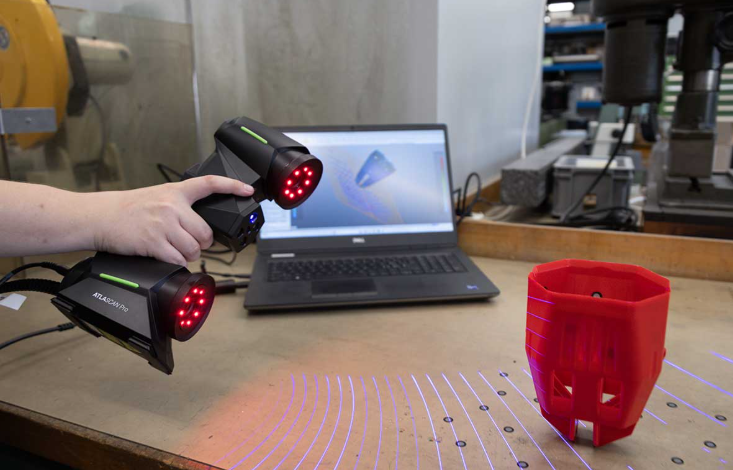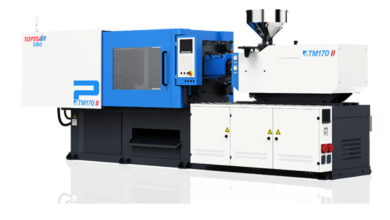Unlocking the Future of Digital Precision: The Rising Power of the 3D Scanner

In today’s rapidly evolving digital landscape, accuracy, speed, and innovation are at the forefront of every industry. From manufacturing to medicine, from design to digital archiving, one device has quickly become a cornerstone of modern technology: the 3D scanner. This powerful tool has transformed the way professionals and hobbyists capture real-world objects, turning them into precise digital models with incredible ease. As the world continues to embrace automation, artificial intelligence, and immersive experiences, the relevance and importance of 3D scanning technology grow stronger each year.
What Is a 3D Scanner?
A 3D scanner is a device that digitally captures the shape, size, and texture of an object, creating a detailed three-dimensional representation. It uses different scanning methods—such as structured light, laser triangulation, infrared, or photogrammetry—to map the surface geometry of an object. The result is a highly accurate digital model that can be used for inspection, reproduction, design, visualization, and more.
Where traditional measuring tools fall short, a 3D scanner offers precision down to fractions of a millimeter. Instead of manually measuring every angle and curve, the scanner does it in seconds. This level of accuracy makes it indispensable in industries that demand perfection, such as aerospace, automotive, medical engineering, and high-end product design.
How 3D Scanners Work
While the underlying science varies across different types of 3D scanners, the core principle remains the same: project, capture, and compute.
- Projection
The device projects a pattern of light or laser onto the object’s surface. This pattern may be a grid, stripes, dots, or even a complex sequence of images. - Capture
Cameras or sensors in the scanner detect how the projection deforms when it hits the object. These distortions give the scanner information about depth and surface geometry. - Computation
Specialized software interprets the captured images and calculates each point in three-dimensional space. These points form a detailed point cloud, which is then converted into a mesh to create a full 3D model.
This process is fast and automated, allowing even beginners to scan real objects with minimal effort. Over time, advancements have made 3D scanners more compact, portable, and user-friendly, widening their use across many industries.
Applications of 3D Scanning Across Industries
The versatility of 3D scanning technology has led to its widespread adoption in fields that value accuracy and efficiency. Here are some of the most impactful applications:
1. Product Design and Rapid Prototyping
3D scanners help designers and engineers reverse-engineer existing objects, refine prototypes, and accelerate product development cycles. With accurate 3D models, designers can modify or replicate objects without guesswork. This greatly reduces production time and minimizes costly design mistakes.
2. Manufacturing and Quality Control
Manufacturers depend on 3D scanners to ensure that components meet strict tolerances. By comparing scanned models to original CAD files, quality inspectors can instantly identify defects, differences, or wear. This is especially crucial in industries like automotive and aerospace, where precision determines safety and performance.
3. Healthcare and Custom Medical Solutions
In the medical world, personalization is everything. 3D scanners play a major role in creating patient-specific prosthetics, orthotic devices, dental models, surgical guides, and implants. With accurate anatomical scans, doctors can design solutions that fit perfectly, improving comfort and outcomes.
4. Architecture and Construction
Architects and builders use 3D scanning to capture the layout of structures, monitor construction progress, and create accurate digital blueprints. Buildings can now be scanned in minutes, offering real-time data for renovation, restoration, and inspection.
5. Art, Education, and Cultural Preservation
Museums, artists, and researchers have embraced 3D scanning to digitally preserve sculptures, artifacts, and historical structures. This ensures accurate documentation for future generations while opening opportunities for 3D replication and interactive education.
6. Virtual Reality, Gaming, and Animation
In the world of entertainment, realism is everything. 3D scanning helps capture faces, body movements, props, and environments with incredible precision. These digital assets can be used in animations, VR worlds, video games, and cinematic visual effects.
Why 3D Scanners Are Becoming Essential Tools
Many businesses today operate in a competitive environment where accuracy and efficiency determine success. Here are the primary reasons 3D scanners have become indispensable:
Speed
A task that once required hours of manual measurement can now be done in seconds. This efficiency drastically improves workflow, productivity, and delivery timelines.
Precision
3D scanners deliver measurements with excellent accuracy, ensuring reliable results even for complex geometries or delicate structures.
Cost Savings
By reducing errors, minimizing rework, and speeding up development, 3D scanners help businesses save money in the long run.
User-Friendly Technology
Modern 3D scanners are designed with intuitive software and easy operation. Even beginners can start scanning objects with minimal training.
See also: Building Engaging Learning Environments with EdTech Software
Choosing the Right 3D Scanner
Selecting the best 3D scanner depends on specific needs—accuracy, speed, portability, budget, and intended application. For example:
- Engineers may prioritize high accuracy and industrial-grade performance.
- Designers may prefer compact scanners that capture colors and textures.
- Educators or hobbyists may want affordable and easy-to-use models.
Reliable brands that focus on producing high-quality scanners have made the technology more accessible than ever. If you’re considering exploring the world of 3D scanning, brands like 3d scanner providers offer advanced solutions suitable for beginners and professionals alike.
The Future of 3D Scanning Technology
As technology continues to advance, the future of 3D scanning looks incredibly promising. We can expect scanners to become faster, more precise, and more integrated with emerging technologies such as artificial intelligence and augmented reality. AI-enhanced scanning will automate even more aspects of data processing, while AR may allow users to visualize scans directly in real-world environments.
Additionally, industries like e-commerce, real estate, and online education will increasingly rely on 3D models to enhance customer experience. The demand for real-time scanning and cloud-based 3D processing will also drive innovation.
Conclusion
The 3D scanner has evolved from a niche tool to an essential device in countless industries. Its ability to convert real-world objects into accurate digital models has transformed design, manufacturing, healthcare, education, and entertainment. As accessibility increases and technology advances further, the adoption of 3D scanning will only accelerate.
Whether you are a professional seeking precision or a creative enthusiast looking to explore the digital world, a 3D scanner can open endless possibilities. It is more than a device—it is a gateway to innovation, efficiency, and a future built on digital accuracy.





